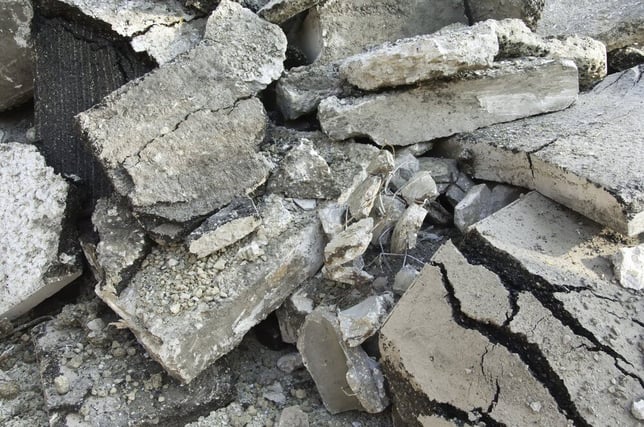How Flood Retrofitting Impacts Flood Insurance Premiums in Birmingham Alabama?
December 3rd, 2019
3 min read
By Chris Greene


Retrofitting means making changes to an existing building to protect it from flooding or other hazards such as high winds and earthquakes. It's important to understand that if your property has flooded repeatedly FEMA may require you to do some of these retrofitting methods. Not all methods work the same way so lets discuss them.
According to FEMA there are 6 different ways to retrofit a property in Birmingham Alabama. We want to talk about how these 6 methods can have an impact on your flood insurance premiums in Birmingham Alabama.
- Elevation
- Wet flood proofing
- Relocation
- Dry flood proofing
- Barrier systems
- Demolition
Elevation
The first method of flood retrofitting in Birmingham Alabama is elevation. Elevating a property is raising a property up from its original position in the flood area. Elevation can have a huge impact on flood premiums. Remember elevation and location are the two driving factors for flood insurance premiums in areas like Birmingham Alabama and Homewood Alabama. So the higher you raise a property the bigger the impact it could be on your flood insurance premiums. Elevating a property in certain flood prone areas like Chandalar court in Pelham Alabama can be very beneficial. Because of this areas location to the special flood hazard it has flooded in the past and more than likely will in the future.
While elevating a property is a great method, one thing many people forget to do is elevate any servicing equipment like air conditioners as well. While elevating a property can be expensive there are some hazard mitigation grants out there that can help assist with this process. When a presidential disaster declaration is filed these grants are passed down to the local communities. Certain projects are identified as higher needs. The federal government normally pays for 75% and the rest is covered by the state. The state then works with the local communities to determine the urgency of these projects.
Let's discuss the second method of retrofitting which is wet flood proofing.
Wet Flood Proofing
Wet flood proofing is allowing water to pass through your home in order to avoid larger amounts of damage. You may ask why in the world would i let water in my home.
Well one reason is it can eliminate pressure on your foundation keeping your foundation from crumbling during a flood.
One example of flood proofing is using flood vents. These are vents that are placed on the outside of your home that allows water and some debris to pass through.
In order to get credit for these on your flood insurance premiums in Birmingham Alabama the home needs to be above grade foundation like a crawlspace. Then you need to have 1 square inch for every square foot. So if you have 700 square feet you need to have 700 square inches of flood vents. These vents range from $200-400 per vent and then an additional $200-400 for installation. However its not uncommon for it to lower flood premiums in areas like Centerpoint Alabama from $3000 to $700.
Before investing in these vents you want to make sure you have the right foundation type on a home which can be done by obtaining an appraisal or an elevation certificate. You can click here to look at ordering an elevation certificate.
FEMA also states you must have at least 2 flood vents on your home and they must be on different sides of the home. There are two different types of flood vents, engineered and non engineered.
While FEMA does not look at them differently regarding flood insurance rates, engineered flood vents can do a better job of minimizing damage.
Let's look at the 3rd method of retrofitting which is relocation.
Relocation
Relocation is just like it sounds it is actually picking up the building and moving it to another location. This might mean 50 feet up the hill or 500 miles across country. This completely removes the building from the existing flood risk. Like elevation there are grants and NFIP flood coverages that can cover these expenses.
When it comes to a National Flood Insurance Program policy in order to qualify for resources for relocation the building has to be considered substantially damaged.
Remember substantially damaged means more than 50% of the market value before the flood.
As a result in most situations this removes the mandatory requirement for flood insurance.
The 4th method of retrofitting is dry proofing. So what is dry proofing?
Dry Flood Proofing
Dry proofing is sealing your home to prevent flood waters from entering. Sometime this can mean putting a temporary barrier around your property when flood waters are expected. This type of retrofitting usually requires a lot of human intervention, as a result it is not considered a factor in lowering flood insurance premiums.
The 5th method of retrofitting is barrier systems. Barrier systems are things that keep water away from your home. A good example of these are flood walls and levees. These can be expensive to install and maintain. Also if they change the base flood elevation of the area, then a flood plain manager has to sign off before they can be approved. What makes this method even more expensive is they do not impact your National Flood Insurance Program rates at all.
Demolition

The last method of retrofitting is demolition. This is completely tearing the structure down and rebuilding. This may mean rebuilding on the same property or elsewhere. It removes the property from the special flood hazard area.
As you can see some methods of retrofitting can have a big impact on your flood insurance premiums while others may not. Some methods can be expensive like elevating a property. It's important to understand how each one of these methods can impact your property and others in the community. It's also important to understand when you may qualify for certain grants that can help with these methods.
If you have further questions about how retrofitting your property can impact your flood insurance rates then make sure to visit our website. You can also check out our YouTube channel or Facebook page The Flood Insurance Guru where we do daily flood education videos.

